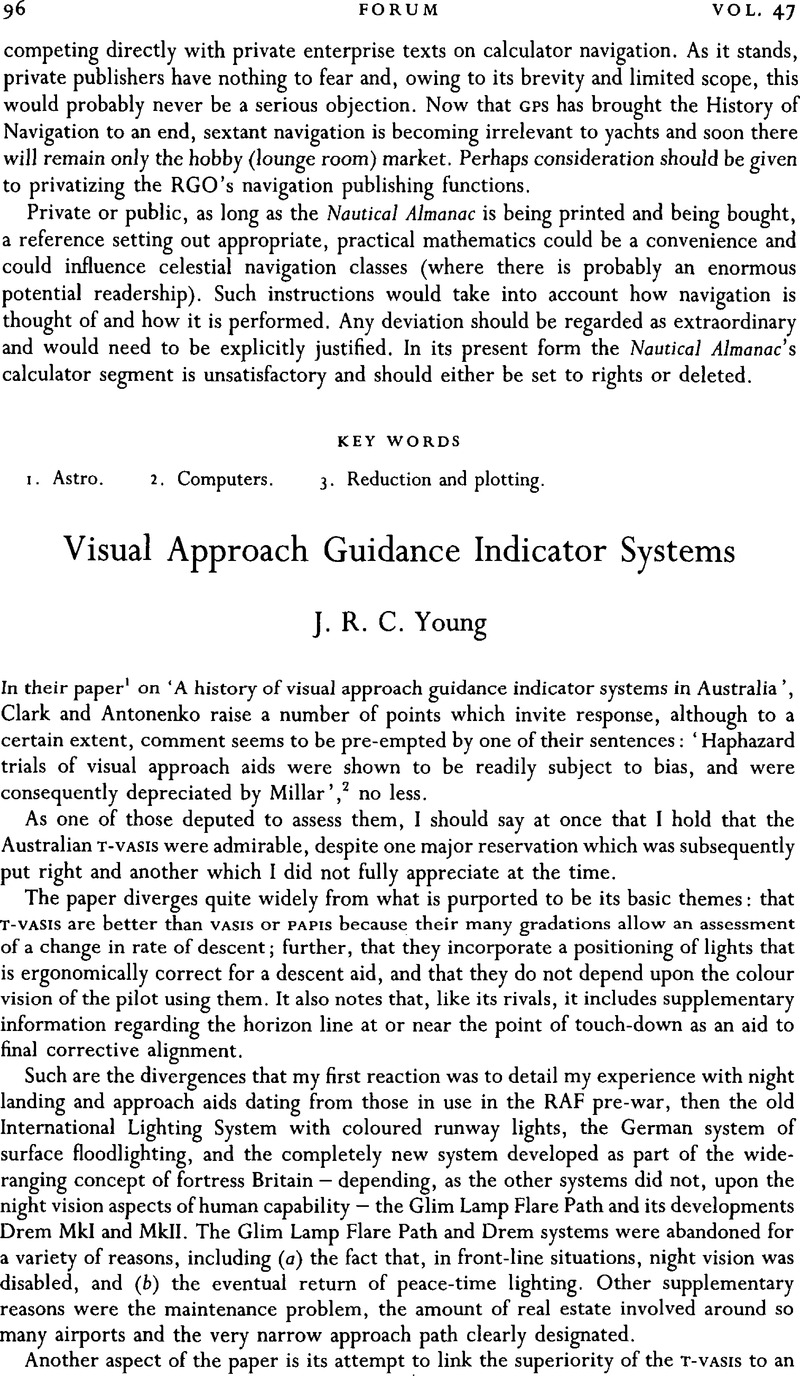No CrossRef data available.
Article contents
Visual Approach Guidance Indicator Systems
Published online by Cambridge University Press: 21 October 2009
Abstract
An abstract is not available for this content so a preview has been provided. As you have access to this content, a full PDF is available via the ‘Save PDF’ action button.

- Type
- Forum
- Information
- Copyright
- Copyright © The Royal Institute of Navigation 1994
References
REFERENCE
1Clark, B. A. J. and Antonenko, P. (1993). A history of visual approach guidance indicator systems in Australia. This Journal, 46, 49.Google Scholar
2Millar, J. (1984). An analytical comparison of three visual approach slope indicators: VASIS, T-VASIS and PAPI. Systems Report 33, Aeronautical Research Laboratories, Melbourne, Australia.Google Scholar
BIBLIOGRAPHY
Calvert, E. S. (1948). Visual aids for low visibility conditions. Journal of the Royal Aeronautical Society, (July) 439.CrossRefGoogle Scholar
Calvert, E. S. (1955). Technical terms in science and technology. American Journal of Psychology, 49, 476.Google Scholar
Calvert, E. S. (1950). Visual aids for landing in bad visibility with particular reference to the transition from instrumental to visual flight. Trans. Illuminating Eng. Soc. 15, 183.Google Scholar
Calvert, E. S. (1957). The theory of visual judgements in motion and its application to the design of landing aids for aircraft. Trans. Illuminating Eng. Soc, 22, 271.Google Scholar
Wallens, R. M. (1990). Flying Made My Arms Ache. Self-Publishing Association, Upton-on-Severn.Google Scholar




